- News
- Reviews
- Bikes
- Components
- Bar tape & grips
- Bottom brackets
- Brake & gear cables
- Brake & STI levers
- Brake pads & spares
- Brakes
- Cassettes & freewheels
- Chains
- Chainsets & chainrings
- Derailleurs - front
- Derailleurs - rear
- Forks
- Gear levers & shifters
- Groupsets
- Handlebars & extensions
- Headsets
- Hubs
- Inner tubes
- Pedals
- Quick releases & skewers
- Saddles
- Seatposts
- Stems
- Wheels
- Tyres
- Tubeless valves
- Accessories
- Accessories - misc
- Computer mounts
- Bags
- Bar ends
- Bike bags & cases
- Bottle cages
- Bottles
- Cameras
- Car racks
- Child seats
- Computers
- Glasses
- GPS units
- Helmets
- Lights - front
- Lights - rear
- Lights - sets
- Locks
- Mirrors
- Mudguards
- Racks
- Pumps & CO2 inflators
- Puncture kits
- Reflectives
- Smart watches
- Stands and racks
- Trailers
- Clothing
- Health, fitness and nutrition
- Tools and workshop
- Miscellaneous
- Buyers Guides
- Features
- Forum
- Recommends
- Podcast
 How to replace a spoke 01
How to replace a spoke 01Replacing a spoke: 8 easy steps to get a working wheel
A broken spoke is annoying, but not terribly hard to fix. Here's how.
Spokes beak for three main reasons: a manufacturing fault, damage, or metal fatigue. In the latter two cases, the spoke usually breaks at the the bend just before the spoke passes through the hub flange. A fatigued spoke will snap right on the bend. A damaged spoke has usually been damaged by the chain over-shifting off the largest sprocket and will fail near the bend, with obvious gouges where the chain has dug in.
A faulty spoke might break anywhere. If an otherwise undamaged spoke has snapped at the thread or in the straight section between rim and hub, it was probably faulty.
A faulty or damaged spoke should simply be replaced. In a properly built wheel, stainless steel spokes don't fail through fatigue, so a fatigue failure can be the first of many. Two or more fatigue failures means the best option is to rebuild the whole wheel with new spokes.
Tools & Materials
• Replacement spoke
• Spoke key
• Zip ties
1. Remove the wheel from the bike, then remove the tyre, tube and rim tape, unless your rims are tubeless models with fully sealed rim bed, with no access to nipples from behind. Unscrew the threaded end of the broken spoke from the nipple.
Inspect the nipple flats for wear. If they're tatty, now is a good time to replace it. This one looks to be in good shape, so it can stay. Poke the other broken end out of the hub flange.
2. This particular spoke broke in the most usual spot, the rear drive side. These spokes are carrying most of the drive forces and can also be damaged by an over-shifted chain.
Remove the cassette to access the spoke hole in the flange. Here we're unpicking the spoke from the ones it crosses from hub to rim, noting whether it passes over or under the others. On a traditional three cross lacing pattern, a spoke would go under, under, over the three other spokes on its way to the rim.
3. You'll need to buy a suitable replacement spoke. Spokes come in different lengths, depending on the hub and rim you're lacing together; they're available in 2mm length incrememts. The right length is important; too short and the spoke won't pass into the rim bed for support, leaving the nipple carrying the torque loads. Too long and the nipple will bottom out on the unthreaded spoke shaft, or the end of the threaded portion could (on low profile rims) poke through the rim tape, causing puncture risk. On-line spoke length calculators are a great way to find out what spoke length you need. Ours is a perfect match.
4. Getting the spoke into the hub flange can be a task, especially on rear drive sides, where spoke length is short and hub shell width is narrow. Navigating a disc rotor doesn't help, though you should be able to do it without removing the rotor. Don't be afraid to flex the spoke to get it lined up with the flange spoke hole, you'll need to present the very end perpendicular to the flange otherwise the spoke threads will catch. Make sure you enter the hub flange from the correct side.
5. Sometimes the new spoke head won't want to seat squarely straight away, the spoke can take a bit of jiggling and flexing to get it orientated so it points in the right direction and the head sits flat against the the hub flange. Make sure when you thread the spoke that it follows its assigned pattern. Here it's a three cross pattern, so our new spoke passes over two spokes and under the third (not in shot) before engaging the nipple.
6. The new spoke will overlap the end of the nipple, so you'll need to flex the spoke a bit to get it to line up with the open end of the nipple.
If you've removed the rim tape, it is possible for the nipple to get pushed inside the rim and rattle about. It'll usually fall out with a gentle shake. Use the threaded end of your broken spoke to hold it in position while the new spoke is engaged. Once a turn of thread is achieved, the old spoke can be discarded.
7. With the end of the spoke engaged, tighten the spoke with the appropriate size spoke key. Use a dedicated spoke key, not one in a multi-tool as they're often poorly finished and can lead to damaged nipples. We like Park Tool's keys and the Spokey; the Park Tool one is in shot here.
8. Once the new spoke is in position, you can either finish the truing job with a wheel truing stand, or if you don't have one, you can improvise, as we've done here.
Place the wheel back in the frame. Position two small zip ties, one on each seat stay or fork leg (depending on which wheel you're working on) at rim level and angle the ends so they just clear the extremes of any run out. The zip tie ends act as visual guides to the tension adjustments you make as you return the wheel to true.
Replace your cassette, if you've had to remove it. Then when you're happy with the true of the wheel, replace the tape, tube and tyre.
Latest Comments
- Aluminium can 12 sec ago
While I always have lights on day and night and wear fluro, I have a friend that wears all black all the time and doesn't use lights ever. His...
- eburtthebike 2 hours 4 min ago
A sad case, and one with no winners. The driver can thank her lucky stars that the cyclist wasn't more seriously injured and that the court was...
- AidanR 3 hours 1 min ago
Bloody hell... How are you doing now?
- ktache 3 hours 9 min ago
And I liked endura too. Got a nice long sleeve mostly merino long sleeve a little while back, in orange.
- matthewn5 3 hours 37 min ago
No, the Ebay lights have been around for several years, this Lezyne light just appeared.
- chrisonabike 3 hours 53 min ago
They shouldn't worry - the second part of the "tariff" refrain is "they can make it in US and they'll do very well".
- Mr Blackbird 4 hours 25 min ago
"At the going down of the sun, it will get in our eyes and cause us to crash into things."
- Rendel Harris 4 hours 33 min ago
Been living in the area thirty years now and Brixton Cycles (and local riders wearing their famed Rastafarian colours jersey) has been an iconic...
- chrisonabike 9 hours 29 min ago
Indeed - but again these are perhaps questions we should keep asking. Even if the immediate answer is "well we are where we are" or "how on earth...
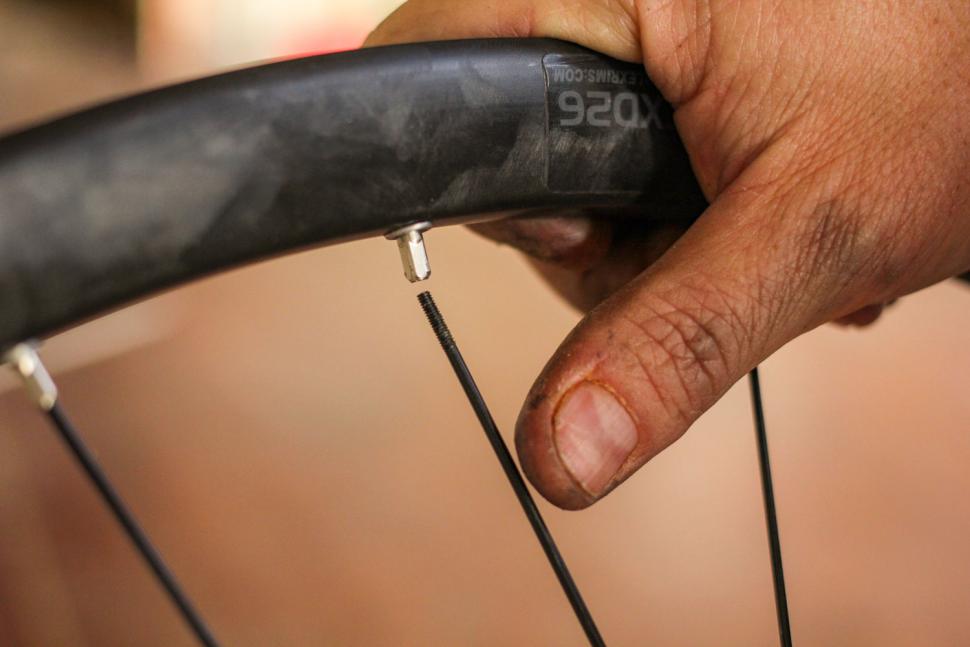
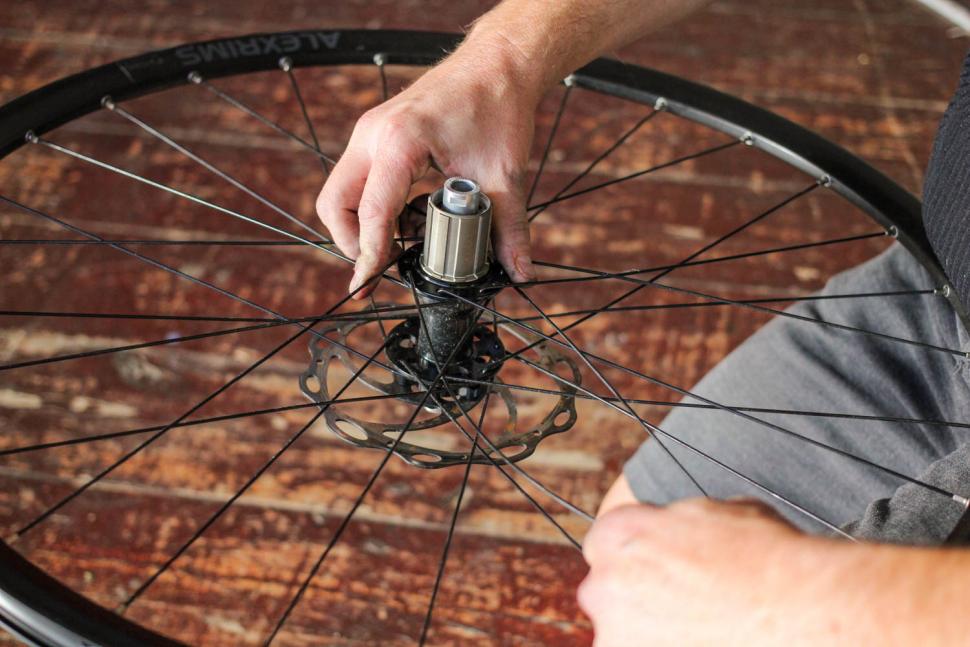
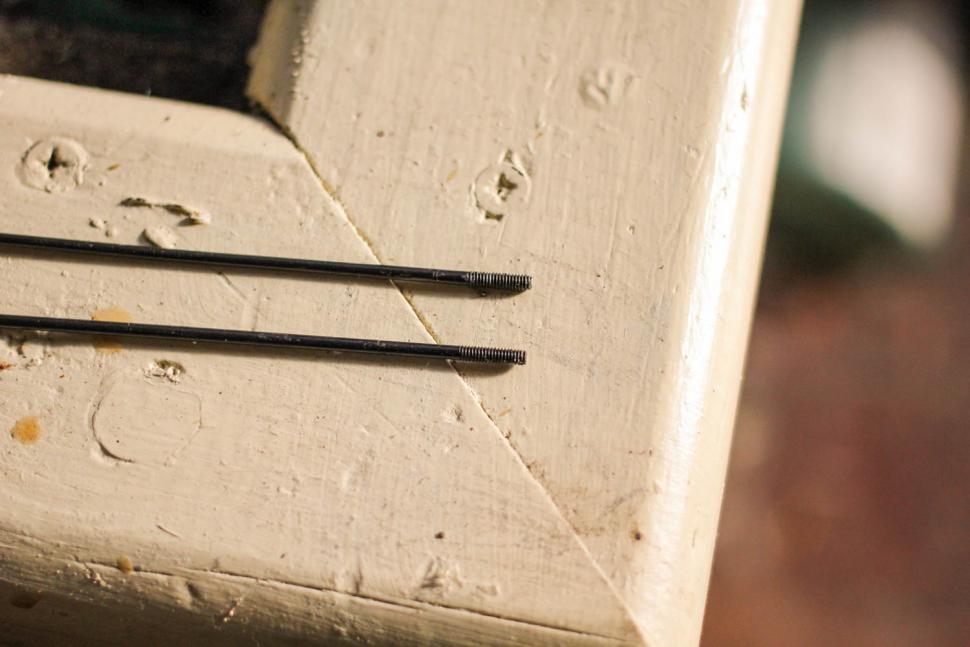


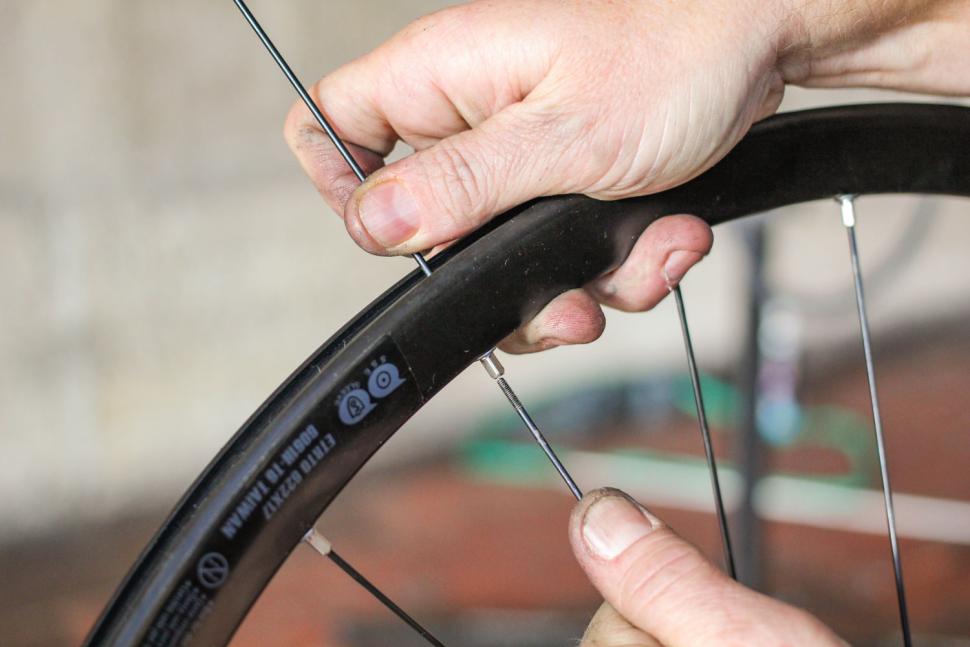

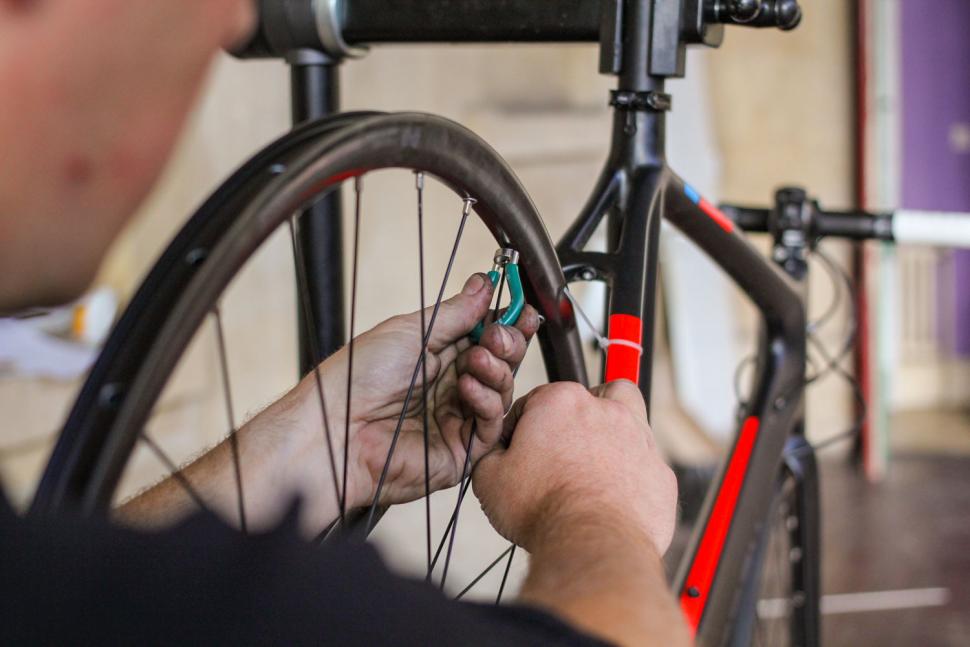
Add new comment
14 comments
"First Published May 22, 2020", comments go back 5 years? Have I been in a coma?
You left out the bit about trying to get the nipple that is rattling around the inside of the deep section aero rim. I spent 45 minutes this afternoon shaking, wriggling and slapping one of my Stans Rims trying to get that little fecker out of the rim.
I guess that bit of the video would only be entertaining for the first thirty seconds or so.
Cheers David
Try sticking something into the nipple to avoid this, a matchstick, or cut the end of a cotton bud and stick this the top of the nipple when you insert it into the rim so you won't loose it.
Generally when a spoke breaks it's when your out on the road and you only notice it when some thing starts rattling.
I always use a spare spoke, just a couple of turns on the thread.
Or just as it suggests in the article, screw the end of your broken spoke into the top of the nipple, push it through and connect the new spoke, once connected remove the old one. Absolutely foolproof.
Yes - I feel your pain with the Stans Rims wayward nipples. I've broken two rear spokes on my GT Grade wheel and getting those suckers out is no fun. I'm now having the wheel re-built with double-butted spokes to strengthen it - two broken spokes in three months and I've only had the bike seven months.
Do you have stock wheels? Which model?
I have still the stock front wheel on my GT Grade Alloy 2015, with a black no-name wheel. A spoke broke some weeks ago. It has 1.8 mm spokes that I did not find in replacement. So I fit a standard black 2.0 mm replacement.
Maybe the stock 1.8 spokes are just to thin?
No problems with trueness with the mix of 2.0 and 1.8 mm so far on my side.
A hoover normally helps. (Empty it first so you can retreave that pesky nipple)
What did you mean by "too short and the spoke won't pass into the rim bed for support, leaving the nipple carrying the torque loads"? Effectively the only load the spoke carries is along its length. It can't do more than miniscule side loads, it just bends.
The effect of too short a spoke is that not enough threads are engaged in the nipple and the spoke can pull out. I've had it happen : -(
Torque is transmitted by virtue of the fact that the spoke is not radial. Radial spokes don't transmit torque.
Favourite spoke key/wrench is the Pedros set of 4 style.
I wondered about this too, and I think they mean that if the spoke is too short, it only engages with a few threads on the nipple, so that all the load is through the thinnest section of the nipple. If the spoke is the right length, it will go all the way through the nipple and the load will be taken by the thickest section, where the nipple beds in to the rim.
Hmm perhaps... When a spoke breaks the internal stresses in the wheels can redistribute themselves unevenly around the wheel. If you simply screw in a new spoke and tighten it until the wheel is true then stresses most likely won't return to normal (when the wheel was originally built). You may get lucky and the above is worth a try, but if you want a strong reliable wheel, that remains true and does not break any more spokes, al the remain spokes should be slackened off, the new one added and then all trued up as normal.
I can only talk from personal experience as I'm no wheel builder, I can true, rim swap and replace spokes, but I wouldn't rate my own 'from scratch' wheels. I digress, I had a pair of wheels which after a couple of years of regular, normal use, had a spoke failure. Oddly at the rim end. On closer inspection, it appeared to me, the builder had used spokes that were marginally too short. They did not quite meet the rim by a millimetre or so. He'd used the nipple to bridge the albeit tiny difference. The break was to the nipple, not the spoke. I put it down to bad luck, until a month later, another went, then another. All in the same way, at the base of the nipple. I concluded that the light alloy nipples were having to carry load between the spokes and rim, which nipples, especially light alloy ones (I know, but it was trendy at the time..) aren't supposed to do.
Since then, I've always made it a point to ensure that I have a couple of threads of the spoke tip inside the rim surface to bridge that gap.
Unless I've misunderstood you that's exactly what they are supposed to do. The threads of the spoke engage with the threads of the nipple in tension and the head of the nipple pulls on the rim.
That makes sure there is enough engagement between the nipple and the spoke. Two few threads engaged (=spoke too short) means nipple failure. If you check the inside of a nipple you will see the thread only goes part way down so you need the spoke long enough to come nearly to the top of the nipple - as you have done.